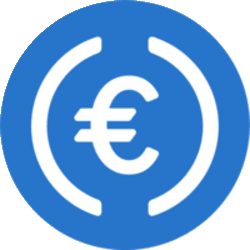Circle’s USDC Stablecoin Gains EU Regulatory Approval Under MiCA, Poised to Challenge Tether’s Dominance
Contents
- Circle has achieved a significant milestone by receiving EU regulatory approval for its stablecoin under the MiCA crypto framework.
- However, recent data indicates a decline in the network growth for both USDC and Tether’s USDT.
- The approval could change the landscape for USDC, despite its current lag behind USDT in market cap.
Circle secures EU regulatory approval for its stablecoin under MiCA, signaling a massive potential shift in the stablecoin market dynamics.
Circle Gains Foothold in European Market
Circle has managed to secure regulatory approval for its USDC and EURC stablecoins under the European Union’s Markets in Crypto-Assets (MiCA) framework. This landmark approval, announced on July 1st, marks the first time a stablecoin has achieved such a status within the EU.
Jeremy Allaire, CEO and co-founder of Circle, emphasized that this development provides strong regulatory clarity and boosts investor confidence in the firm’s stablecoins. With this recognition, Circle’s stablecoins are now aligned with the EU’s comprehensive digital asset regulations, reassuring investors about the legitimacy and compliance of their holdings.
France: The Strategic Choice for Circle’s EU Operations
Circle has selected France as its European headquarters, a decision largely influenced by the country’s forward-thinking approach to digital asset regulation. France’s Prudential Supervision and Resolution Authority (ACPR) played a key role in this collaboration, underscoring the nation’s conducive regulatory environment.
Jeremy Allaire highlighted the significance of the MiCA framework, describing it as a pioneering regulation that brings unprecedented stability and legitimacy to the digital asset and stablecoin sectors within the EU.
Potential Market Dynamics: Can USDC Surpass USDT?
Despite the recent regulatory win, USDC still lags behind Tether (USDT) in market share and capitalization. As of now, USDC maintains a 20% market share with a $32 billion market cap, while Tether boasts a substantial 70% market share and a $112 billion market cap.
This new regulatory compliance could be a transformative moment for Circle, potentially catalyzing an increase in USDC demand, particularly among European investors cautious about unregulated digital assets.
Network Growth Decline: A Temporary Setback?
Despite Circle’s advancements, recent data from Santiment indicated that both USDC and USDT experienced a decline in network growth. This metric, which measures new address creation, showed a downward trend for both stablecoins in the past few days, suggesting a temporary slowdown in market adoption.
Conclusion
In summary, Circle’s recent regulatory approval in the EU is a significant step toward establishing USDC as a trusted and compliant digital asset. While USDT remains the market leader, increased regulatory compliance for USDC could shift market dynamics. Investors and market participants will be closely watching these developments, particularly how they influence stablecoin adoption rates and market positions in the coming months.
